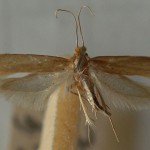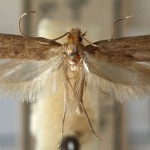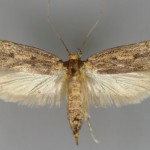What are moths that attack clothes and textiles?
Moths that attack clothes and textiles are a group distinct from those that primarily target food. These types of moths, found in the UK, include clothes moths and case-bearing clothes moths, which are often referred to as “true clothes moths.” In smaller numbers, brown house moths, which can damage textiles, plant materials, and some animal-based materials, are also part of this group.
However, it is not the adult moths that cause the damage to clothing and textiles but rather their larvae. These larvae primarily feed on animal-based textiles, although larvae of clothes moths can also consume synthetic or plant-based textiles. Brown house moth larvae typically feed on dry foods but can also attack textiles. Moth larvae feed on textiles from the time they hatch from eggs until they pupate.
How to Control Moths That Attack Textiles
If you have discovered moths in your home and are unsure of the species, you can identify them by consulting our article on moth species, which also provides further information on how to control different moth types.
Clothes Moths and Case-bearing Clothes Moths
Clothes moths and case-bearing clothes moths are controlled similarly, as both feed on textiles. The control process primarily involves removing their eggs and larvae from the affected textiles. To be thorough, it's recommended to clean all textiles stored with the affected items. Eggs and larvae can be killed by washing, dry cleaning, freezing, or heating the clothes. You can read more about controlling clothes moths here and case-bearing clothes moths here.
Brown House Moths
Brown house moth larvae typically feed on plant materials, unlike clothes and case-bearing clothes moths, but they may also attack clothes and other textiles as well as some animal-based materials. If brown house moths have attacked your clothes, it is necessary to remove their eggs and larvae from the clothing and check all dry foods for signs of infestation. You can read more about controlling brown house moths here.
What Textiles Are Attacked?
The type of textiles moth larvae feed on largely depends on the species, though food scarcity or availability can also influence the damage. For instance, larvae that primarily feed on animal-based textiles may chew through synthetic fabrics to reach the animal materials. Similarly, they may consume mixed textiles, such as blends of wool and cotton.
- Animal-based textiles frequently attacked by moths include wool, silk, fur, hair, feathers, down, leather, and more.
- Plant-based textiles prone to attack include cotton, linen, sisal, hemp, and others.
In practice, the following items are often attacked by moths:
- Clothes in closets, particularly those made from animal textiles, dirty clothes, or garments that are not frequently used.
- Carpets, curtains, upholstery, and other household textiles.
- Bedding, linens, towels, tablecloths, cloth napkins, and similar items.
Additionally, clothes moths tend to prefer dirty textiles, such as laundry or work clothes, that contain body oils. This is because moths do not drink water but instead get moisture from the dirt in the clothing. Even though clothes moths prefer animal-based textiles, they may attack dirty synthetic or plant-based textiles solely because of the moisture in the fabric’s dirt.



